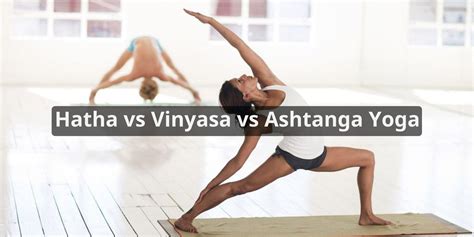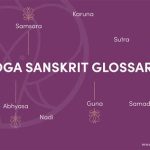Vinyasa vs Ashtanga: Finding the Yoga Practice That Fits You Best
In the realm of yoga, there is a wide array of styles, each offering unique benefits and challenges. Two of the most popular styles are Vinyasa and Ashtanga. Both are dynamic and physically demanding, yet they differ in their sequencing, philosophy, and intended outcomes. Whether you are new to yoga or an experienced practitioner, understanding the key differences between these two styles can help you make an informed decision on which practice aligns better with your goals and lifestyle.
Introduction
Choosing between Vinyasa and Ashtanga Yoga can feel overwhelming, especially for those seeking a practice that matches their personal fitness level, wellness goals, and even their philosophical outlook on life. While both share a foundation in movement and breath synchronization, their approaches to teaching, structure, and progression differ significantly.
In this comprehensive guide, we will break down each style, analyze their core philosophies, examine the historical roots and the modern evolution of these practices, and provide practical examples to help you determine which style is right for you.
Key Concepts
- Vinyasa Yoga: A dynamic flow style that emphasizes seamless transitions between postures, synchronized with breath.
- Ashtanga Yoga: A more rigid, structured practice, following a set series of postures that progressively build in difficulty.
- Breath Synchronization: Both styles emphasize the coordination of breath and movement, but Ashtanga enforces it more strictly with its count-based system.
- Philosophical Approach: Ashtanga adheres to the Eight-Limb Path outlined by Patanjali, while Vinyasa allows more flexibility in personal expression.
Historical Context
Ashtanga Yoga has its roots in the teachings of Krishnamacharya and his student Pattabhi Jois. Developed in the early 20th century, Ashtanga emphasizes a disciplined and rigorous practice based on a fixed sequence of poses. The method was designed to cultivate physical strength, mental clarity, and spiritual growth through a meditative approach to movement.
Vinyasa Yoga emerged as a more modern interpretation of Ashtanga, with influences from various other forms of yoga and fitness traditions. It gained popularity in the West during the 1970s and 1980s, largely through the work of teachers like Beryl Bender Birch and Shiva Rea. Vinyasa is more adaptable, allowing for creative sequencing that changes from class to class. This style embraces diversity in expression and is often tailored to the teacher’s interpretation and the student’s needs.
Current State Analysis
| Aspect | Vinyasa | Ashtanga |
|---|---|---|
| Structure | Flexible, dynamic sequencing; changes class by class. | Rigid, fixed sequence of poses; each class follows the same structure. |
| Intensity | Moderate to high intensity; can be tailored to different skill levels. | High intensity; requires mastery of each level before progressing. |
| Teacher’s Role | Facilitator; allows creativity and personalization in class design. | Instructor; follows a strict method, with little deviation from tradition. |
| Adaptability | Highly adaptable to all fitness levels and personal goals. | Less adaptable; may not suit all levels, especially beginners. |
| Philosophical Roots | Draws on diverse teachings, allowing for individual interpretation. | Deeply rooted in Patanjali’s Eight-Limb Path. |
Practical Applications
Practitioners often choose between Vinyasa and Ashtanga based on their fitness goals, mental focus, and personal preferences. Vinyasa’s fluidity is particularly attractive to those who enjoy variety and a sense of creative freedom in their practice. Its adaptable nature allows teachers to modify the intensity and difficulty of the class depending on the students’ needs, making it suitable for both beginners and advanced practitioners.
In contrast, Ashtanga appeals to those who seek discipline, consistency, and a measurable progression in their practice. The repetition of postures in a set sequence encourages practitioners to focus deeply on their alignment, breath, and mental state over time. This structured approach can lead to significant physical and mental growth but may be too rigid for those who prefer a more varied practice.
Case Studies
| Case Study | Vinyasa | Ashtanga |
|---|---|---|
| Case 1: Sarah, a beginner looking for stress relief | Enjoys the creative, flowing nature of Vinyasa. Finds it calming and less intimidating as a beginner. | Struggles with the rigidity and intensity of Ashtanga. Feels overwhelmed by the fixed sequence. |
| Case 2: John, an athlete seeking physical challenge | Appreciates the flexibility but finds the lack of structure frustrating for achieving specific goals. | Thrives on the discipline and measurable progress of Ashtanga. Appreciates the physical rigor. |
| Case 3: Maria, a seasoned yogi seeking spiritual growth | Enjoys the fluidity and variety of Vinyasa but misses the depth of a more structured practice. | Finds deep spiritual connection in the repetition and discipline of Ashtanga’s Eight-Limb Path. |
Stakeholder Analysis
Both yoga practitioners and teachers are key stakeholders in the debate between Vinyasa and Ashtanga. Vinyasa practitioners value creativity, adaptability, and the freedom to explore different expressions of yoga. They often appreciate the varied pace and intensity, which makes it a more accessible practice for all fitness levels.
Ashtanga practitioners, however, are typically more drawn to the rigor and predictability of a fixed sequence. They often find satisfaction in the methodical progress of mastering each series of postures. Ashtanga teachers, in particular, see their role as gatekeepers of tradition, ensuring that the lineage and original teachings are preserved.
Implementation Guidelines
- For Beginners: Start with Vinyasa to build familiarity with key poses and breathwork. Gradually explore Ashtanga if you’re interested in a more structured, disciplined practice.
- For Intermediate Yogis: Consider alternating between the two styles to enjoy both the variety of Vinyasa and the depth of Ashtanga. This balance can help you stay motivated and continue progressing.
- For Advanced Practitioners: Deepen your understanding of both styles by integrating the discipline of Ashtanga with the fluidity of Vinyasa, incorporating aspects of each into your practice.
Ethical Considerations
As with any physical and mental practice, yoga requires ethical mindfulness. Both Vinyasa and Ashtanga have their own ethical challenges and opportunities. Vinyasa practitioners must be cautious of sacrificing depth for variety. The fast-paced nature of some classes may lead to improper alignment or injury if not practiced mindfully.
In Ashtanga, the rigid structure can sometimes create a culture of elitism, where only those who can master the intense physicality are seen as truly advancing in their practice. This rigidity may exclude people with different body types or abilities from feeling welcome in the practice. Teachers need to remain inclusive and adaptive to ensure the practice serves a diverse range of students.
Limitations and Future Research
- Vinyasa: The lack of consistency across teachers and classes makes it difficult to establish a uniform standard for progression and safety. More research is needed on how this flexibility impacts long-term physical and mental benefits.
- Ashtanga: The intense, repetitive nature of Ashtanga can lead to injury, particularly in the joints. Future studies could explore ways to adapt the sequence for different body types and physical conditions without losing its integrity.
Expert Commentary
Ultimately, the decision between Vinyasa and Ashtanga boils down to personal preferences and goals. Vinyasa offers flexibility and adaptability, making it a great choice for those seeking variety and creativity in their practice. Ashtanga, on the other hand, appeals to individuals looking for a more disciplined, structured approach that emphasizes measurable progress and self-mastery.
The key is finding a practice that resonates with your body, mind, and spirit. Whether you thrive on the creative flow of Vinyasa or the methodical rigor of Ashtanga, both styles offer profound benefits that can enrich your physical, mental, and spiritual well-being.








